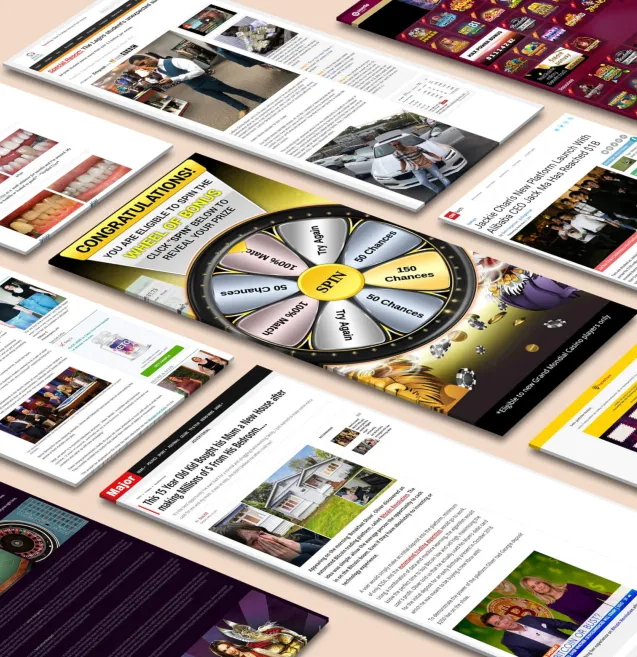
Our spy tools monitor millions of push notification ads from over 90+ countries and thousands of publishers.
Get StartedTraffic arbitrage is a powerful digital marketing strategy where you buy web traffic at lower costs and redirect it to generate higher returns. It's about finding pricing gaps between different platforms and turning them into profit opportunities.
Why ROI matters in traffic arbitrage:
In today's competitive digital world, mastering traffic arbitrage can create significant revenue streams. You'll discover how to use exploit-based traffic arbitrage techniques to maximize your returns while maintaining sustainable growth.
This guide reveals 7 proven strategies to boost your arbitrage ROI. You'll learn specific methods for:
Get ready to transform your traffic arbitrage game with tactics that deliver measurable results.
Traffic arbitrage operates on a simple yet powerful principle: buy low, sell high. You purchase website traffic from various sources at a lower cost and redirect it to monetized destinations where you can generate higher revenue. This traffic arbitrage strategy is all about maximizing profits by leveraging low-cost traffic.
Here's a breakdown of the core components:
Media buyers play a crucial role in successful traffic arbitrage campaigns. These professionals:
The profit margin in traffic arbitrage comes from the difference between your traffic acquisition costs and revenue generated through monetization. For example, you might pay $0.10 per click for traffic from Facebook ads and earn $0.15 per visitor through AdSense displays - creating a $0.05 profit per visitor.
The key to successful arbitrage lies in maintaining positive unit economics while scaling your campaigns. This requires constant testing, optimization, and adaptation to changing market conditions.
Successful traffic arbitrage requires implementing strategic approaches that capitalize on market inefficiencies and platform dynamics. These proven strategies help you achieve higher returns while minimizing risks.
Exploit-based arbitrage leverages pricing discrepancies and audience targeting gaps between different advertising platforms. This strategy focuses on identifying opportunities where traffic costs significantly less on one platform compared to potential earnings on another.
A practical example involves purchasing traffic from Facebook at $0.05 per click and directing it to content monetized with premium ad networks paying $0.15 per visitor. This creates a $0.10 profit margin per visitor, excluding additional revenue from secondary monetization methods.
CPC arbitrage success depends on finding the right balance between low acquisition costs and high-quality traffic. The secret is to manage bids strategically across various ad platforms.
The real profit potential emerges when you combine these cost-reduction techniques with quality metrics. A practical approach involves:
Your CPC optimization efforts should focus on finding the sweet spot where traffic cost allows for profitable conversion rates while maintaining sufficient volume for scaling. Additionally, leveraging advanced technologies such as NLP email automation can further enhance your marketing strategy by improving the efficiency of your email campaigns, ultimately driving down costs and increasing conversion rates.
Smart media buying starts with a modest testing budget of $50-$100 per campaign. This approach allows you to gather essential performance data without risking significant capital. You'll identify winning combinations and eliminate losing variables before scaling your investment.
Your creative optimization should focus on:
The real power of media buying optimization lies in precise targeting refinement. Start broad, then narrow down based on performance data:
Track your Return on Ad Spend (ROAS) for each targeting parameter. A successful campaign typically requires 3-5 rounds of optimization before achieving optimal performance. Keep your cost per acquisition (CPA) targets firm while testing different bidding strategies across platforms.
Remember to maintain separate tracking for desktop and mobile traffic - they often perform differently and require distinct optimization approaches. Use platform-specific features like Facebook's automated rules or Google Ads' smart bidding to automate routine optimization tasks.
Traffic source analysis is the backbone of successful arbitrage campaigns. Each traffic source has its own characteristics that can affect your return on investment (ROI) potential.
Track these metrics in a dedicated dashboard for real-time monitoring. Remove underperforming sources quickly to preserve your budget for profitable channels. Regular A/B testing helps identify new winning combinations of traffic sources and landing pages.
Scaling traffic arbitrage requires a systematic approach to maintain profitability while expanding your reach. Here's how to scale effectively:
Remember to maintain strict tracking systems as you scale. Small inefficiencies can multiply quickly when working with larger budgets. Regular performance reviews help catch potential issues before they impact your ROI significantly.
Diversifying your arbitrage models creates multiple revenue streams and reduces dependency on a single traffic source. Let's explore proven arbitrage models that deliver consistent results:
AdSense Arbitrage
Lead Generation Arbitrage
Each model requires specific optimization techniques and testing strategies. AdSense arbitrage works best with informational content, while lead generation thrives on commercial intent traffic. Combining multiple models allows you to maximize revenue potential across different traffic sources and user behaviors.
Successful traffic arbitrage requires a strong ethical foundation. Let's break down the three main categories of arbitrage practices:
Platform compliance plays a crucial role in sustainable arbitrage success. Each advertising platform maintains specific guidelines:
"Violating platform policies can result in permanent account bans, financial losses, and legal consequences"
Essential Compliance Checklist:
Smart arbitrage practitioners focus on white-hat strategies, building long-term sustainable businesses through ethical practices. This approach protects your revenue streams while maintaining positive relationships with advertising platforms and target audiences.
Success in traffic arbitrage requires a strategic combination of data-driven decision-making and ethical practices. The seven strategies outlined here provide a strong framework for creating profitable campaigns while staying compliant with platforms and earning user trust.
To maximize your return on investment (ROI) through traffic arbitrage, follow these steps:
Remember: sustainable traffic arbitrage isn't about quick wins - it's about building systematic processes that deliver consistent returns. Each strategy, from exploit-based arbitrage to diversified revenue models, needs careful implementation and ongoing improvement.
Take action now: Start with one strategy, master it, then expand your toolkit. Track your metrics, optimize relentlessly, and maintain ethical standards. Your commitment to these principles will set you apart in the competitive landscape of traffic arbitrage.
Receive top converting landing pages in your inbox every week from us.
Must Read
This blog uncovers how AI can transform holiday marketing campaigns into high-performing, data-driven successes. It explains how AI tools help optimize targeting, personalize messaging, and predict consumer behavior for better engagement. Readers will learn practical ways to fine-tune their campaigns and boost conversions during the busy holiday season. Ideal for marketers looking to maximize results and efficiency with AI-powered strategies.
Marcus Chen
7 minNov 21, 2025
Tips & Tricks
This blog explores how combining push notifications with email marketing can create a seamless customer journey that drives higher conversions. It explains how these two channels complement each other — with push delivering instant engagement and email nurturing long-term relationships. Readers will learn actionable tips on timing, personalization, and automation to build a consistent conversion strategy. Perfect for marketers seeking to improve retention and maximize ROI across platforms.
Liam O’Connor
7 minNov 15, 2025
Must Read
Push notifications have become one of the most direct and effective tools for customer retention marketing. These short messages with images or videos go straight to your customers' devices, creating immediate opportunities to remind them about your brand. Unlike emails that often go unopened in busy inboxes, push notifications grab attention with an average open rate of 90% compared to email's 20%.
David Kim
7 minNov 9, 2025




